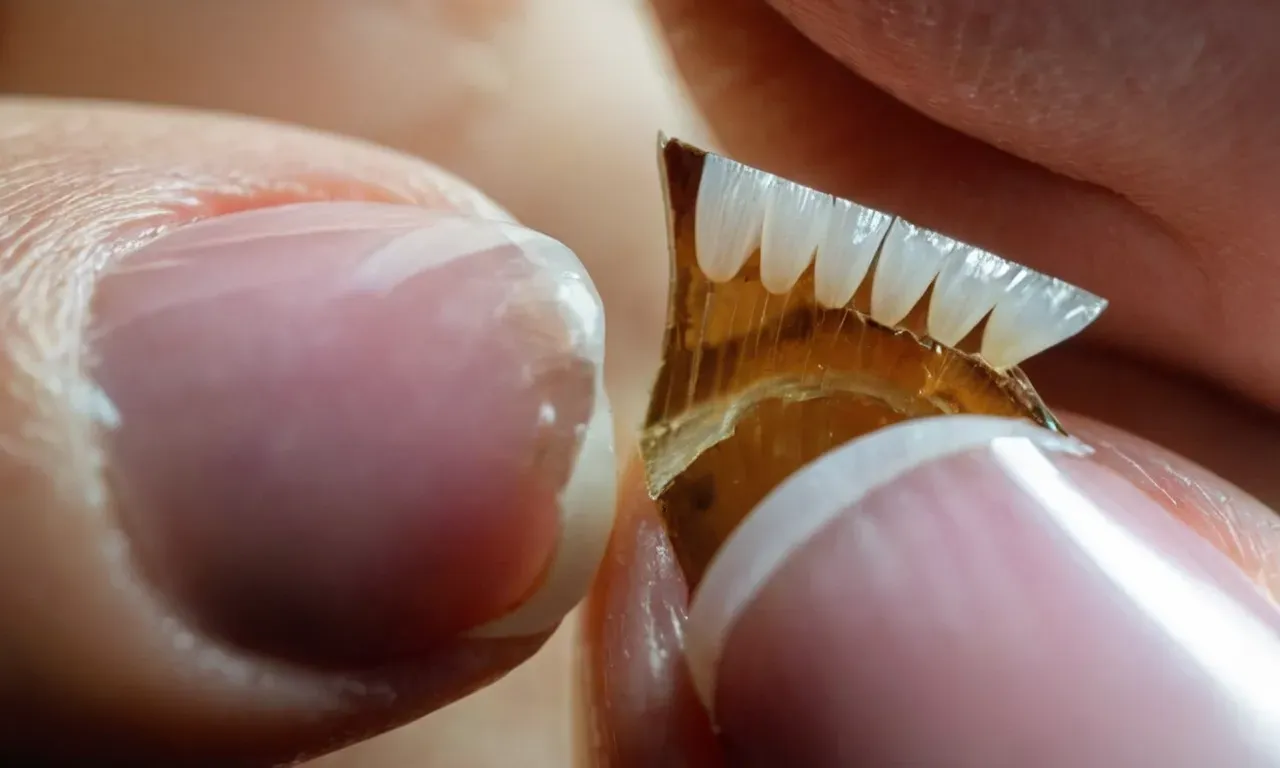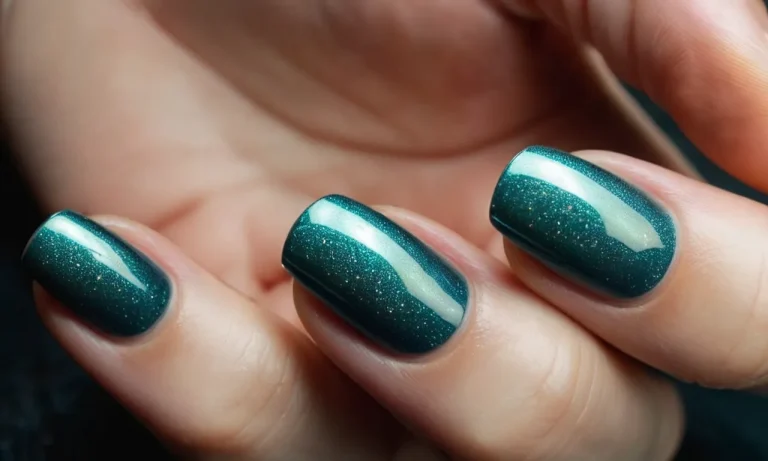Why Does My Pinky Toe Nail Keep Splitting?
If you’ve noticed your pinky toe nail splitting often, you’re not alone. Many people deal with this pesky problem that can cause pain and discomfort. But don’t worry – with the right care, you can get your pinky toe nail to grow back healthy and strong.
If you’re short on time, here’s a quick answer to your question: Frequent splitting or cracking of the pinky toe nail is usually caused by trauma, improper nail care, or fungal infections. Keeping nails trimmed, avoiding tight shoes, using moisturizer, and treating fungal infections can help prevent and heal splits.
In this comprehensive guide, we’ll discuss all the possible causes of a split pinky toe nail and the best treatments available to cure it.
What Causes a Split in the Pinky Toe Nail?
It can be super annoying when the nail on your little piggy keeps splitting! But don’t worry, figuring out the cause is the first step to finding a solution. Here are some of the most common culprits behind a split pinky toenail.
Repeated trauma or injury
This is likely the most common cause of a split toenail. Repeated trauma, like stubbing your toe or dropping something on it, can weaken the nail over time. The constant pounding your feet take while walking, running or participating in sports can also lead to splits or cracks.
Tight shoes that cram your toes together probably don’t help either! Try to avoid repetitive trauma to the toe and give those piggies some breathing room.
Poor nail care
Improper nail care is another super common cause of splits. Trimming your nails too short, rounding the edges, or peeling off hangnails can weaken the nail and make it prone to cracking. It’s best to trim nails straight across and avoid manipulating the skin around the nails.
Using moisturizer can help prevent painful hangnails too. A little TLC goes a long way for healthy, split-free nails!
Fungal infections
Fungal infections like athlete’s foot can lead to thick, brittle toenails that split more easily. Fungus disrupts the normal growth of the nail, causing it to become soft and discolored. If you suspect a fungal infection, see your doctor for diagnosis and treatment options.
Sometimes just applying antifungal cream or keeping your feet clean and dry can clear it up. But you may need prescription oral medication for more stubborn fungal nails.
Other contributing factors
There are a few other things that may make you more prone to split pinky nails:
- Age – Nails can become more brittle as we get older.
- Genetics – Some people are just more susceptible to brittle, splitting nails.
- Medical conditions – Health issues like diabetes, psoriasis and poor circulation can affect nail health.
- Medications – Certain drugs like retinoids and blood pressure medications can cause nail splits.
- Nutrient deficiency – Being deficient in nutrients like vitamin A, B vitamins, zinc or calcium may weaken nails.
- Dehydration – Staying hydrated helps keep nails flexible and less prone to cracking.
If you can pinpoint the cause of your splitting pinky nail, you can take steps to treat it. Protect your toes from trauma, practice good nail care, treat infections, manage any underlying conditions, and make sure you’re getting proper nutrition and hydration.
Persistent splitting that doesn’t respond to home care may need medical treatment, so see your doctor if you can’t get it under control. With some TLC for your toes, you can outsmart that split pinky nail!
How to Treat and Prevent Split Pinky Toe Nails
Keep nails trimmed properly
Keeping your toenails properly trimmed is one of the best ways to prevent splitting and cracking of the pinky toenail. The nails should be trimmed straight across to avoid leaving sharp edges that can catch on socks or shoes. Use nail clippers designed specifically for thicker toenails.
Trim them regularly, about once every few weeks, to keep the length short. This helps reduce stress on the nail bed.
Wear properly fitted shoes
Ill-fitting shoes are a major cause of split pinky toenails. When shoes are too tight, narrow, or short, they put excessive pressure on the toes, forcing them together. This can cause the pinky nail to press against the side of the shoe and split down the middle or along the edges.
Wear properly fitted shoes with a wide enough toe box to allow your feet to spread naturally. Also look for shoes with cushioned insoles, shock absorption, and arch support. Avoid high heels, pointy flats, and any styles that cram your toes together for long periods.
Moisturize nails and cuticles
Keeping your nails and surrounding skin well-moisturized can help prevent splits and cracks. After bathing, massage a nourishing nail and cuticle oil into the nail beds and cuticles. Look for plant-based oils like jojoba, vitamin E, and coconut oil.
You can also apply a thick emollient moisturizer daily. The extra hydration protects the nail plates from drying out and becoming brittle and prone to cracking.
Use anti-fungal treatments if infected
Fungal infections are a common cause of split, discolored, thickened toenails. Over-the-counter antifungal ointments, creams, and sprays can clear up mild fungal infections. Apply as directed for up to 12 weeks. Oral prescription antifungal medication may be needed for more severe infections.
Removing the infection helps restore the nail’s health and prevent further splitting and peeling.
See a podiatrist for severe cases
For chronic, severe splitting that doesn’t resolve with self-care, see a podiatrist. They can determine if an underlying condition like nail fungus, improper trimming, or ill-fitting shoes is causing the problem.
For very thick, painful nails, they may recommend partial or complete surgical removal of the nail (onychectomy) for long-term relief. They can also apply special medicated nail lacquers to help clear infections and normalize nail growth.
Home Remedies for Split Pinky Toe Nails
Tea tree oil
Tea tree oil is a natural antiseptic that can help prevent and treat split pinky toe nails. To use it, dip a cotton swab in pure tea tree oil and gently apply it to the split nail and surrounding skin once or twice a day.
The antibacterial and antifungal properties of tea tree oil make it an effective home remedy for preventing infections and promoting healing of cracked nails (source).
Petroleum jelly
Applying petroleum jelly is a simple home treatment that can provide moisture and protection for split toenails. After thoroughly cleaning and drying your nail, apply a layer of petroleum jelly over the cracked area and nail bed. Reapply daily to keep the nail hydrated.
The occlusive nature of petroleum jelly traps moisture and reinforces the nail to prevent further splitting and irritation.
Biotin supplements
Some research suggests that taking biotin supplements can strengthen brittle nails prone to cracking by increasing keratin production. Aim for 2.5 mg of biotin per day, though effects may take several months to appear. Biotin is also available as gummy vitamins for easy supplementation.
Always check with your doctor before starting any new vitamins (source).
Essential oils
Certain essential oils contain nutrients that support nail health. Oils like lavender, tea tree, lemongrass and oregano oil boost circulation to stimulate growth and have antifungal properties. Try mixing a few drops into a carrier oil like coconut or jojoba oil and massaging into nails and cuticles daily.
Diffusing oils also allows you to inhale the therapeutic vapors.
Avoid harsh soaps and detergents
Harsh soaps, cleaners and detergents can dry out and irritate skin, making nails more prone to cracking and infection. Carefully rinse soap from toes and feet and use gentle, moisturizing products. Wear rubber gloves when washing dishes or cleaning to protect hands and feet.
Implementing home care techniques while avoiding excess moisture or trauma to the toes can help prevent recurring splits. See a podiatrist if pain, redness and swelling develop, as the nail may need to be removed to treat a subsurface infection.
When to See a Doctor About a Split Pinky Toe Nail
Persistent splitting
If your pinky toe nail keeps splitting again and again, it’s a good idea to get it checked out. Repeated splitting can be a sign of an underlying condition. Frequent splits can also increase your risk of infection. See your doctor if the splitting persists for more than a few weeks.
Discoloration or thickening of nail
Noticeable changes in the color or thickness of your nail may indicate a problem. Yellow, brown or black discoloration can result from trauma, infection or even melanoma. Increased thickness is also not normal. Schedule an appointment if you observe these abnormal changes in your pinky toe nail.
Unusual pain, swelling, or discharge
Moderate to severe pain, swelling and discharge around the nail are red flags for an infection. This requires prompt medical care to prevent complications like cellulitis. Don’t try to treat it at home. Seek treatment as soon as you notice these troubling signs.
Diabetes or circulation issues
Frequent nail splitting can result from diabetes, poor circulation or nutritional deficiencies. People with these conditions often have weaker nails. Have your doctor check for any underlying problems. Proper management of your health condition will help strengthen nails and prevent splits.
Injury causing nail to detach
Trauma from stubbing your toe can cause the nail to partially or fully detach. See your doctor right away if the nail lifts up and exposes the sensitive nail bed underneath. Leaving it open increases the risk of infection. Prompt treatment improves healing.
In most cases, a split pinky nail will grow out on its own without issues. But if you notice any of the warning signs above, don’t hesitate to consult your doctor. Getting the right diagnosis and care can prevent more serious complications with the nail or your overall health.
Outlook for Split Pinky Toe Nails
Usually heals well with proper care
A split pinky toe nail is often caused by injury or improper trimming. With some simple at-home care like gently filing the edges, applying antibiotic ointment, and taping a bandage over it, the nail should start growing back within 4-6 weeks. Keep the area clean and dry to prevent infection.
Wear roomy shoes and avoid knocking or stubbing the toe while it heals. For most people, a split nail will grow out and be replaced with a new healthy nail.
May take 4-6 months to grow out
It typically takes 4-6 months for a nail to grow from the nail matrix to the end of the toe. Since the pinky toe nail grows more slowly than other nails, you may need to be patient. Once the split part of the nail grows all the way out, the new nail replacing it should be normal and healthy.
During the grow-out period, continue protective measures like filing, ointment, and bandages to prevent reinjury.
See doctor if no improvement after 6 months
If the split nail does not start to grow out normally within 6 months, it’s a good idea to see a podiatrist. The doctor can examine the nail matrix and surrounding skin to determine if there is an underlying condition causing the problem.
Things like fungal infections, psoriasis, and chronic injury can all prevent proper nail growth. The podiatrist may scrape part of the nail or take a culture to diagnose contributing factors. They can then recommend specialized medications or other treatments to get the nail growing correctly again.
Left untreated, can lead to infection
Like any open wound, a split nail that is not properly cared for could develop an infection. Bacteria can enter through the crack and get under the nail bed. Signs of infection include increasing pain, redness, swelling, oozing pus, foul odor, and streaks extending from the nail crack.
If an infection occurs, oral antibiotics will likely be needed to clear it up. So it’s important not to ignore a split nail – seek treatment right away and keep it clean until fully healed.
Conclusion
A split pinky toe nail can be annoying and painful, but have hope – with diligent nail care and prompt treatment if infected, you can get your nail growing back healthy in no time.
Be gentle with your feet, keep nails trimmed, wear proper footwear, and moisturize nails daily. See a doctor if pain persists or the nail changes color or texture. With some simple tweaks to your foot care routine, you can outsmart troublesome toe nail splits for good!
Your pinky toe nail splitting is likely just caused by minor trauma or improper care, so don’t panic – just focus on targeted treatments and prevention methods. Before you know it, you’ll have strong, smooth toe nails that don’t crack under pressure. Relish your pedicure-ready feet!







